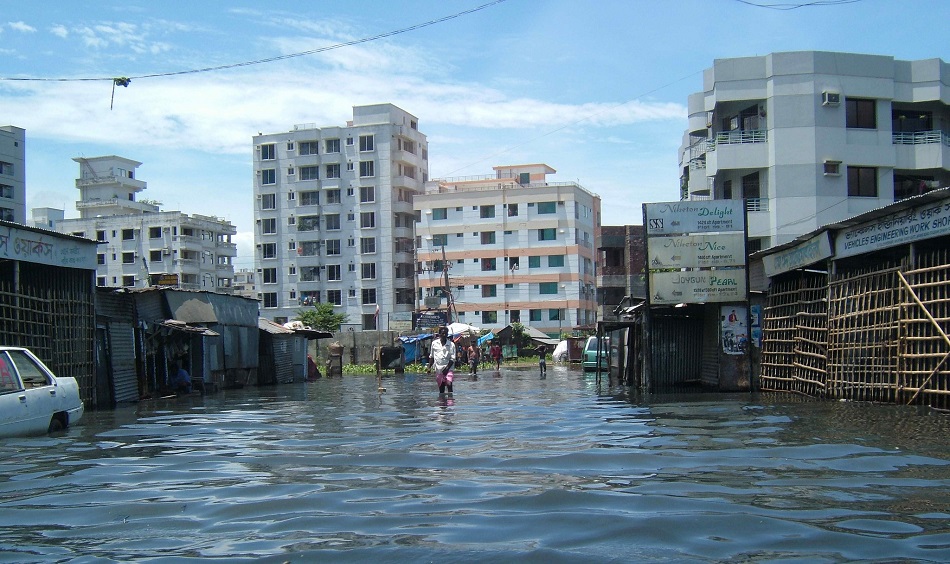
The impact of climate change is here and how. Random flooding is commonplace and summer heat waves are the new normal. Analysis by Cornell University’s Global Labor Institute and Schroders, which has studied four important readymade garment manufacturing countries, namely, Bangladesh, Pakistan, Cambodia and Vietnam, has pointed out some disturbing facts about the global apparel manufacturing sector. The four countries as a collective could lose up to $65 billion which is 22 per cent of lost exports and 950,000 lesser jobs by 2030.
With factories closing due to flood damages and insufficient insurance back up to reconstruct them as well as intolerable heat creating a slump in labour productivity, by 2050, these four countries are going to find themselves at the edge of a complete wipeout with job losses of 8.6 million and a loss of exports amounting to nearly 69 per cent. For these four economies which rely heavily on the apparel manufacturing and export sector for foreign exchange reserves and employment, it spells a socio-economic disaster of huge proportions, forcing parts of their population to seek illegal immigration.
The writing is on the wall
Researchers looked at the climate vulnerable apparel industries in Bangladesh, Cambodia, Pakistan and Vietnam, which collectively represent 18 per cent of global apparel exports, house approximately 10,000 apparel and footwear factories and employ 10.6 million workers. The Schroder’s study in association with Cornell University mapped out the supply chains of six unidentified global apparel brands operating in the four countries studied, and found all six would be hit materially. The impact would be severe as one of the six brands studied would stand to lose around 5 per cent of its operating profits. This report may have provided a jarring reality check to the global apparel manufacturing, export and import sector but they may have not been able to impress either buying brands an, investors or manufacturers.
What experts say
In a communiqué, Angus Bauer, Head of Sustainable Investment Research at Schroders commented: “This research highlights the urgent need for action. Investors must begin to engage with apparel companies and their stakeholders to ensure they start to measure and address the significant challenges of physical climate impacts on workers and business models. Furthermore, apparel companies must look to partner with suppliers, and work with peers, worker organisations and policy makers to design suitable adaptation strategies that consider the impact on workers. Adaptation planning could have positive returns on investment for the industry and is a critical addition to mitigation efforts.”
Cornell University’s Global Labor Institute’s executive director Jason Judd opined, “The apparel industry and regulators have mostly framed their climate responses around mitigation issues—emissions, water usage, and recycled fabrics. They are ignoring the climate issues that are dramatically and directly affecting suppliers and their workers now. The Global North’s climate nightmares are already in evidence in Bangladesh, Pakistan, Cambodia and elsewhere. Life, let alone work, will become very difficult in these and many other hotspots that apparel brands and retailers depend on for production.”
Schroders initiative to arrest losses
Schroders, which manages over $874 billion in assets, are keen to increase engagement with companies over their disclosures and they have called on firms to work with suppliers and policymakers to build adaptation strategies that consider the impact on workers. Using projections, researchers analyzed future heat and flooding levels to estimate what would happen under a "climate adaptive" scenario and a "high heat and flooding" scenario.
Under the second, workers would suffer more "heat stress", with worker output declining as the wet-bulb globe temperature, which measures heat and humidity, rises. According to Bauer, all stakeholders need to be transparent and report the correct figures and incidences to enable a robust correctional model as the way forward.












